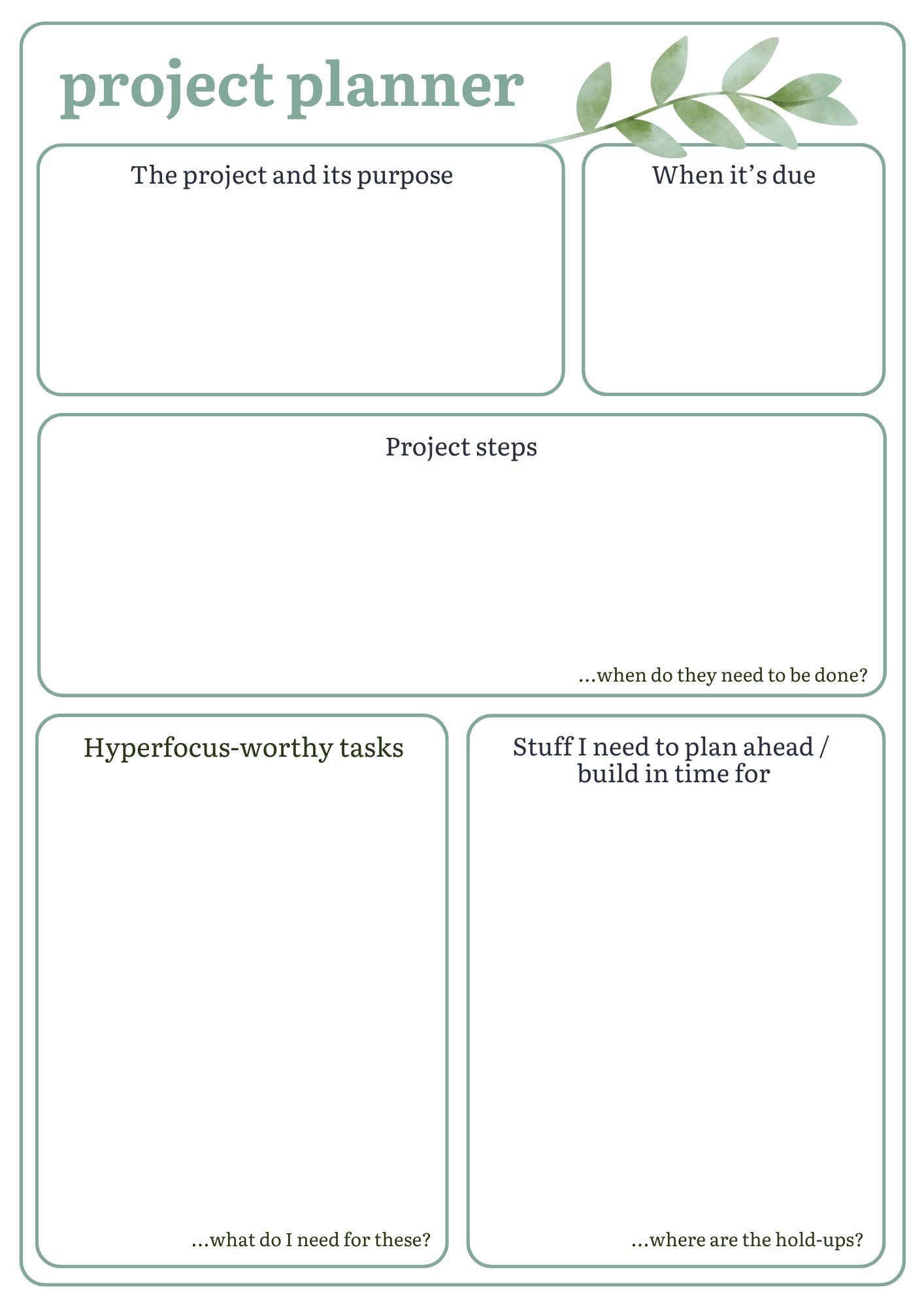The gist of this post is:
You can plan in a way that suits your unique brain. For those of us with ADHD, that might mean finding ways to leverage hyperfocus but planning ahead for anything requiring collaboration or diary-wrangling.
To do this, you can align projects with your goals and interests, break projects into digestible steps, and balance structure with spontaneity.
We know that being neurodivergent comes with both strengths and challenges - but how can we embrace these, when it can sometimes feel like our brains don’t want to do as they’re told?
Last week, I wrote about the ADHD tendency to hyperfocus on tasks, which can be an incredibly productive way of working that (unfortunately!) isn’t sustainable in the longer term.
This got me thinking: what might project planning and management look like, if we allowed for a tendency to work in short, focused bursts? There are some project management techniques that allow for sprints: Agile, used by software teams, is all about short bursts of work. And a lot of ADHD self-help guides have tools for breaking projects down into steps.
Sometimes, even planning needs a plan! In a previous job at the Ministry for the Environment, we used commissioning templates for refining the project scope, specifications, resources and other details. Although this approach is on the more detail-oriented side, it does force you to flush out all the details of the project. Which can be really useful for those of us, like me, who are talented over-committers.
But not every project needs to feel like a massive logistical exercise. Sometimes, you just need a space to get your ideas down and make sure you’re not forgetting anything important.
With that in mind, I made a hyperfocus-friendly planning template with spaces for:
defining the project purpose and connecting it to your values or goals, helping to find what interests or excites you about the project
brain-dumping all the steps of the project, as a first step in understanding the steps required and how they relate to each other
sorting the steps into two categories:
Hyperfocus-worthy tasks: tasks you can complete quickly once you’ve got what you need
Stuff I need to plan ahead/build in time for: tasks that involve other people, processes or really can’t be rushed.
The trick is to make use of your hyperfocus for tasks you can sprint through, like routine tasks, data crunching and writing. And identify where you need to plan ahead for cat-herding, diary-wrangling and processes outside your control.
This is not to say that hyperfocus can be magically summoned at will - it can’t - but if your natural tendency is to work in sprints, it can be useful to identify where that ability can be applied.
To road-test the template, I used it to plan an upcoming conference talk. I’ve been working on the research and ideas behind this talk for a while, but my timelines for completing the work recently changed when I took on a new commitment.
I had a lightbulb moment while filling in the template: I hadn’t made space for rehearsing the talk in my diary, which for me, is a total must-do to avoid stage fright. Having realised this, I blocked out time out for rehearsing in the weekend before the conference. Result: a stressful situation (hopefully) averted.
Got any quirky planning tips of your own? Please let me know!






This is a neat idea Jen! I could imagine I might fill these out but then forget about them, how do you make sure you don’t forget? Do you use something like the Microsoft To Do app?